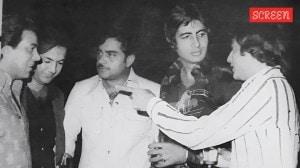Ashwini Vaishnaw: ‘If you have to go green, then we as a country must invest significantly in railways’
At an Adda held in New Delhi on May 20, Ashwini Vaishnaw, Union Minister for Railways, Communications, Electronics and Information Technology, spoke on increased investment in railways, rollout of the Vande Bharat trains and how India can become the biggest chip producer.
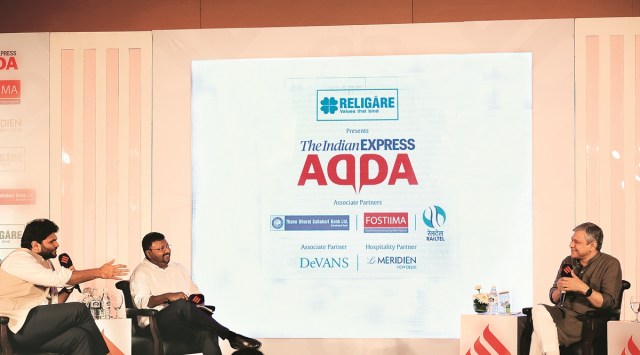 (From right) Railways, Communications, Electronics and Information Technology Minister Ashwini Vaishnaw in conversation with Anil Sasi, National Business Editor, The Indian Express, and Anant Goenka, Executive Director, Indian Express Group.
(From right) Railways, Communications, Electronics and Information Technology Minister Ashwini Vaishnaw in conversation with Anil Sasi, National Business Editor, The Indian Express, and Anant Goenka, Executive Director, Indian Express Group. At an Adda held in New Delhi on May 20, Ashwini Vaishnaw, Union Minister for Railways, Communications, Electronics and Information Technology, spoke on increased investment in railways, rollout of the Vande Bharat trains and how India can become the biggest chip producer.
On the Vande Bharat trains
They are world class on multiple parameters. What are the parameters on which trains are tested? The first and foremost parameter is acceleration — 0 to 100 in 52 seconds. The best equivalent trains in the world, in the most developed, rich countries, need 54 seconds, 55 seconds or 60 seconds. This is 52 seconds.
On the ride index — that means how many jerks are there, what kind of comfort you get — the vibration that you get in Vande Bharat at 180 kmph is actually less than what you get in the world’s best train at 120 kmph. So, on practically every parameter, this train is superior compared to the world’s best.
On the need to upgrade tracks
They are getting upgraded very rapidly. Last year, we did 5,200 km of new tracks, a record 14 km a day; 10 years ago this used to be 3.5 to 4 km a day. These are new tracks. Renewal of the old tracks, meaning replacing worn out tracks or upgrading them in multiple ways, that number is of the order of 7,500-8,000 km every year now. It’s rapidly upgrading. The tracks were earlier designed for 70-80 kmph speed. Most of the tracks are now being upgraded to 100. A large part of it, we are upgrading to 130. A significant portion we will be doing for 160 kmph.
On making Vande Bharat in India
It was done by our own engineers and our own people. We had to create a new supply chain, again using our own companies in Coimbatore. It has some very good mechanical companies, people who are very good at forging, casting and machining those items.
On the map of Vande Bharat
The first target is to connect every state. Our target is to do this by mid-June. We would have connected every state and then we would be taking routes which are very busy. The idea is this — up to 100 km of distance between two cities, that’s a commuting kind of distance. So, we are developing a train called Vande Metro. The technology for 100 km is different from the technology for beyond 100. From 100 to 500, we have designed a chair car. Beyond 500 km, it has to be a different technology — that will be a Vande Sleeper. So, Sleeper and Metro are in the design process at this point of time. Metro should be coming by January, Sleeper should be coming by March of next year.

On investing in railways
Countries which are equivalent in our population size or our geographical size have invested heavily in railways. In 2016, when the budget of railways was merged with the general budget, the thought process was that we have to increase the investment in rail. The investment was going skewed ever since Atalji did the golden quadrilateral (and I was part of the team which worked on this). Since then, there was a skewed investment of almost four-five times the investment in rail going into highways. That’s why they got built.
Our Prime Minister understood this complexity of a nation, of a large population, and then he started increasing the investment in rail. We have to make a very heavy investment in railways for at least 15 years. We must invest a minimum of Rs 3,00,000 crore every year for at least the next 15 years.
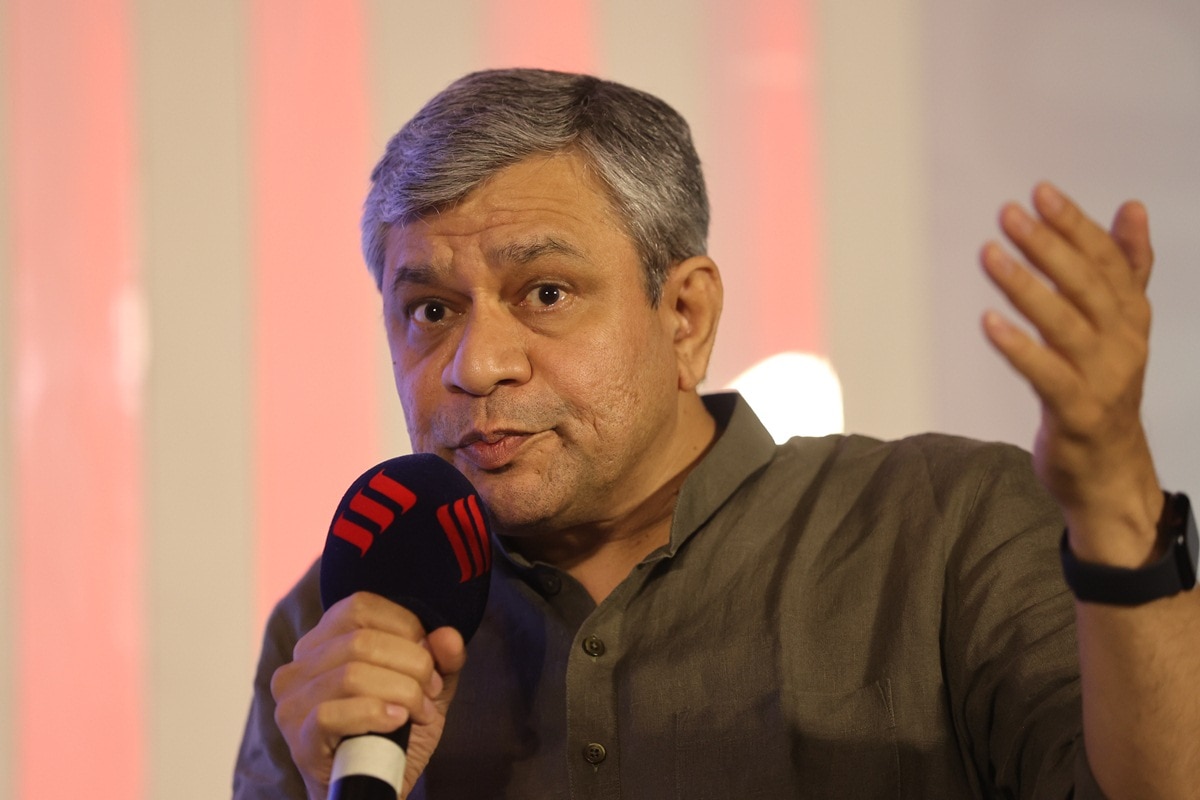 Union Minister for Railways Ashwini Vaishnav at the Indian Express Adda, in New Delhi on Saturday. (Express Photo by Tashi Tobgyal)
Union Minister for Railways Ashwini Vaishnav at the Indian Express Adda, in New Delhi on Saturday. (Express Photo by Tashi Tobgyal)
So, last year, we added 5,200 km of new tracks. That has significantly removed many bottlenecks which were there in the network. That kind of investment we have to do every year, only then will our country be able to transport goods and have a lower cost of logistics.
The cost of transportation by rail is almost one-third of the cost of transportation by road. The carbon emissions by road are about 100 gram per tonne km. Carbon emission by rail is about 11 gram per tonne km. So if you have to go green, if you have to have a low cost of logistics, then we as a country must invest significantly into railways. Only then will we be able to meet that unmet demand and keep the country’s logistics cost low.
On subsidising train travel
We are giving Rs 59,000 crore subsidy — that’s bigger than many states’ budgets — on passenger transportation at this point of time. Which practically means that every passenger on an average is getting about 55 per cent concession. Our passenger prices are the lowest in the world. If you do the Vande Bharat in France, it would be about seven times the price. If you do that journey in Japan, it would be about eight or nine times the price. If you do a similar journey in Switzerland, that will be about 20 times the price.
In freight, last year, we made another record. We carried 1.5 billion tonnes (second highest in the world). The earnings from freight is good. It’s good that we cross subsidise it. We have a very large team, our team has 12 lakh employees. The pension cost is about Rs 55,000 crore. Salary and wages is about Rs 1,02,000 crore. Energy cost is Rs 40,000 crore.
Our maintenance cost is about Rs 9,000 crore. So, with all those numbers, it’s tough math.
 The audience at the Express Adda event in New Delhi (Express Photo)
The audience at the Express Adda event in New Delhi (Express Photo)
On the template for fostering innovation
That’s actually the most difficult thing to do. Some geographies tended to put too much focus on basically a rights-based, entitlement-based regulatory structure. And those geographies have really fallen behind in innovation.
There is another set of geography where the focus was on laissez faire. So you don’t think of any regulation till things have gone to a level. Innovation was very high, but then citizens’ rights were less important. What we’ve tried to do is create a balance between protecting citizens’ rights and innovation. Luckily, given the thought process, given the good talent that we have in our country, and given the complexity of our society, we can think of really complex models. We’ll continue to follow that approach where innovation gets equal importance as rights-based philosophy.
On whether Indian internet users are as concerned about privacy as Americans
I wouldn’t like to make that comparison because different societies are at different stages of their evolution. We all have our own challenges, we all have our own aspirations. Our government very clearly says that we should look at our realities. We should then take the next step.
On social-media regulations
We have to look at the diversity of our society, we have to look at our social institutions. I’ll give you an example. The digital minister of one of the countries which considers freedom of speech above god, told me that social media is destroying the institutions which were created in the last 300 years. She said, when the printing press came, anybody could print anything and distribute it. It created an astronomical growth in information at that point in time. When society started getting affected by it, they created regulations around it and the fundamental point was the accountability of the publisher. A similar phenomenon is now happening in social media. It has to be accountable for what it is publishing. So whatever you’re seeing is fundamentally making sure that a diverse society as ours can remain stable, and grow in a harmonious way.
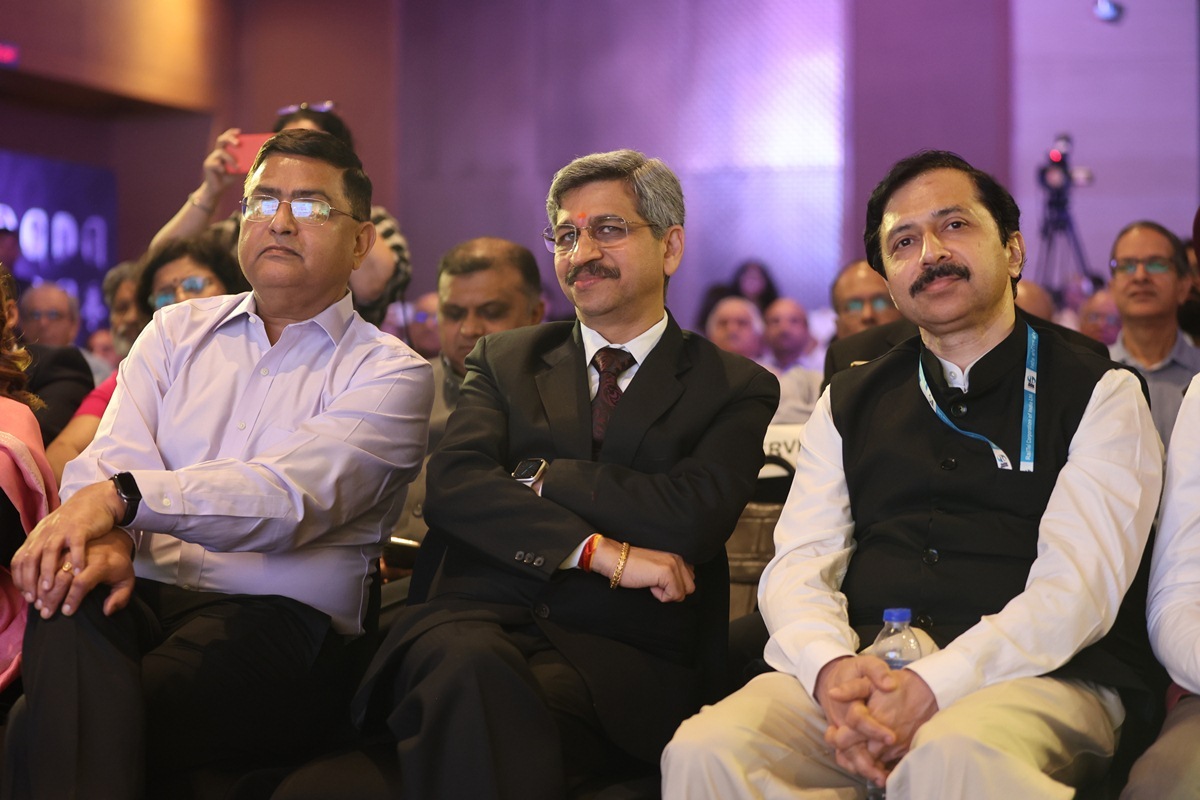 Rakesh Asthana, Former Police Commissioner of Delhi; Sanjai Kumar, Chairman and Managing Director, Rail Tel Corporation of India Ltd; Manoj Tandon, Director-Project, Operations & Maintenance, RailTel (Express Photo)
Rakesh Asthana, Former Police Commissioner of Delhi; Sanjai Kumar, Chairman and Managing Director, Rail Tel Corporation of India Ltd; Manoj Tandon, Director-Project, Operations & Maintenance, RailTel (Express Photo)
On how India can become the semiconductor manufacturing destination
The semiconductor industry, globally, is about $650 billion today. In the next seven to eight years, it’s going to double. By 2030, it should certainly exceed $1 trillion. Practically everything that we see has a semiconductor in it. In Vande Bharat, about 30,000 to 32,000 chips are there in one train. It’s practically like a computer on wheels. The semiconductor is the most important thing in today’s economy. It’s more important than oil as oil can be replaced by batteries but batteries will require semiconductors.
We are looking at a complete picture — what is our geopolitical and geoeconomic positioning? If you manufacture semiconductors in Taiwan, and the cost is 100, then your manufacturing cost in some other richer countries will be about 140 or 160-170. If you manufacture semiconductors in India, the cost will be about 80. We have 52,000 semiconductor design engineers currently working in the country. Within a short time span, since the Prime Minister approved the semiconductor policy, we have tied up with 106 universities, where we are now teaching semiconductor BTech programmes and semiconductor MTech programmes. If you look at the largest semiconductor manufacturing complex in the world, it’s 4,500 acres served by one port. We are creating a zone which will be 10,000 acres to begin with, served by five ports and three international airports.
The world today understands very clearly that the next biggest semiconductor manufacturing destination has to be India. Everybody is advising, don’t rush through this and don’t repeat the mistakes that other countries did. That’s why we are focusing so much on making sure that the ecosystem gets in place. If there is a voltage fluctuation for three seconds, then the whole day’s production will go to waste. That’s the complexity of this entire thing. That’s why we are working in a very methodical and systematic way to make sure that the ecosystem comes up. We know for sure, in the coming four or five years, India will become the biggest semiconductor manufacturing destination if we have the ecosystem in place. Our focus is absolutely on making sure that the ecosystem gets developed.
 Anant Goenka, Executive Director, The Indian Express at the Adda, along with other attendees. (Express Photo)
Anant Goenka, Executive Director, The Indian Express at the Adda, along with other attendees. (Express Photo)
On India’s challenges
The fundamental challenge that we will face is that when we are creating a new industry, people generally have a tendency to wait and watch, which is natural. For example, 10 years back, electronics manufacturing in India was minuscule. Last year, we crossed a benchmark of $100 billion. We have $105 billion in electronics manufacturing. Ten years ago, 98 per cent of the mobile phones that we were using in India were imported. Today, 98 per cent are made in India. Last year, we exported $11 billion worth of mobile phones. When Prime Minister launched the Make in India programme, the political opponents were trying to play it down. But look at the impact that we have today. The semiconductor industry will also be like that.
On moving to 6G
If you look at the evolution of telecom technology, when the world moved from wired to wireless, like mobile, the first generation was practically nothing. But 2G to 3G was one family of technologies. 4G was a new platform. 4G to 5G (and 5G advanced) is one family. 6G will be a totally new platform.
There are three different parts of 4G-5G infra. There is passive infra, which doesn’t need to be changed. There is active infra, which will be changed. Then there are connectivity things, like the optical fibre between the tower and the core, that will continue to carry data with any of the generations.
VOICE BANK
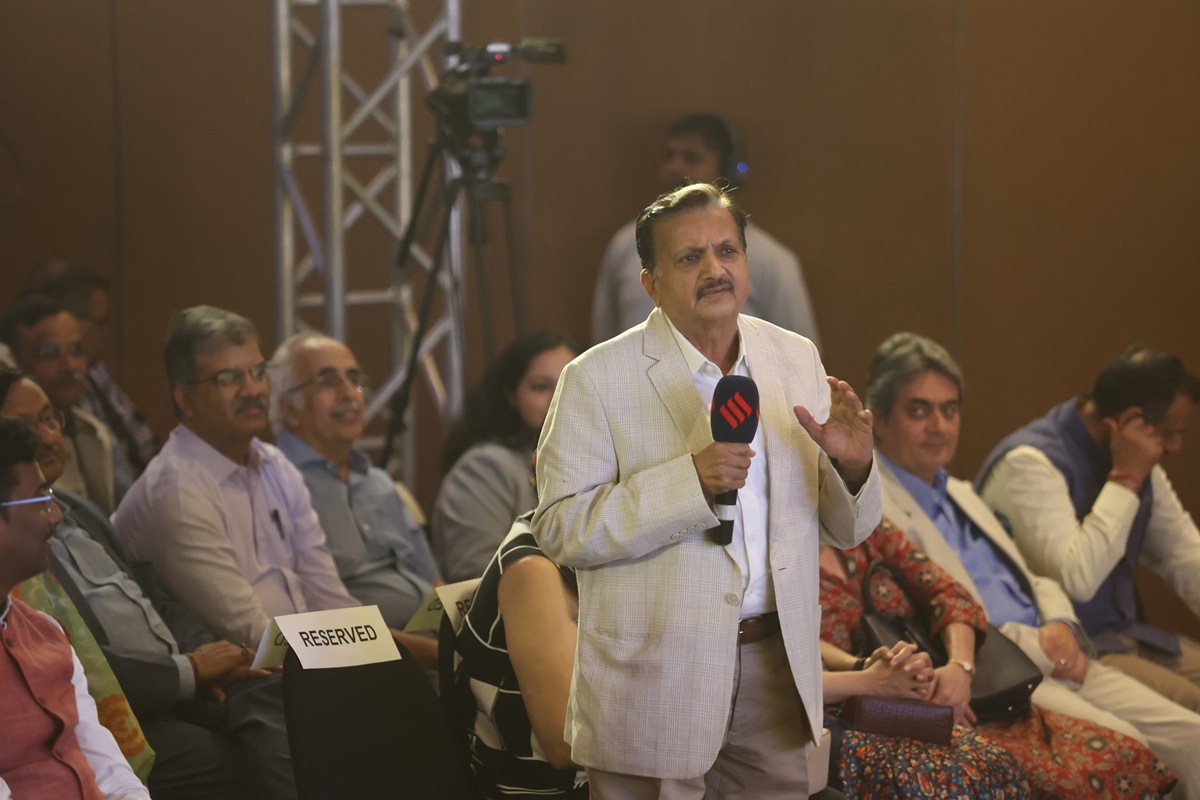 Anil Somani at Express Adda (Express Photo)
Anil Somani at Express Adda (Express Photo)
ANIL SOMANI,
Founder and Executive Chairman, FOSTIIMA Business School
With Vodafone-Idea being where it is, we have a virtual duopoly in the telecom mobile industry. Are we heading towards a monopoly?
We are not heading towards a monopoly. Even a duopoly will not be there. BSNL is coming up as a very stable player in the market. The technology that they are going to use, which is India’s 4G and 5G stack, is a step above the other relevant technologies.
After demonetisation, we have had an amazing cashless economy but the scamsters are also working overtime. What are you planning to do?
We have created a system called ASTR, that has detected 37 lakh fraudulent SIMs and we have deactivated them. We recently rolled out three reforms focused on consumer and citizen protection. When the suite of applications for customer protection is rolled out — around 11 applications — we will have a system where it will be very difficult to do any fraud.
 Dr Ashwani Mehta at Express Adda (Express Photo)
Dr Ashwani Mehta at Express Adda (Express Photo)
DR ASHWANI MEHTA
Owner, Kolmet Hospital
How come Truecaller tells us there are spam calls and it can’t be filtered at the telecom level?
It’s a question of privacy. Truecaller is taking your consent and taking all your data, your entire contact list. If you let the government do that, we can create a better system. Honestly, where we have to work is to create a balance between privacy and innovation.
 Jyoti Parekh at Express Adda (Express Photo)
Jyoti Parekh at Express Adda (Express Photo)
JYOTI PARIKH
Executive Director, Integrated Research and Action for Development
There is a decarbonisation challenge. You are moving 600 million tonne of coal, which earns revenue that helps subsidise passenger transport. What happens to that revenue when coal reduces? Also, there are plenty of opportunities to do solar stations, solar tracks.
Very recently, we procured 1,000 megawatt of green energy. In 60 years, there was 30,000 km of electrification. In these nine years, there was 40,000 km of electrification. That’s the pace at which we are working. We are signing solar PPAs so that we can have maximum possible green… Our PM has given us a target of net zero by 2030. We are working to successfully achieve that target.
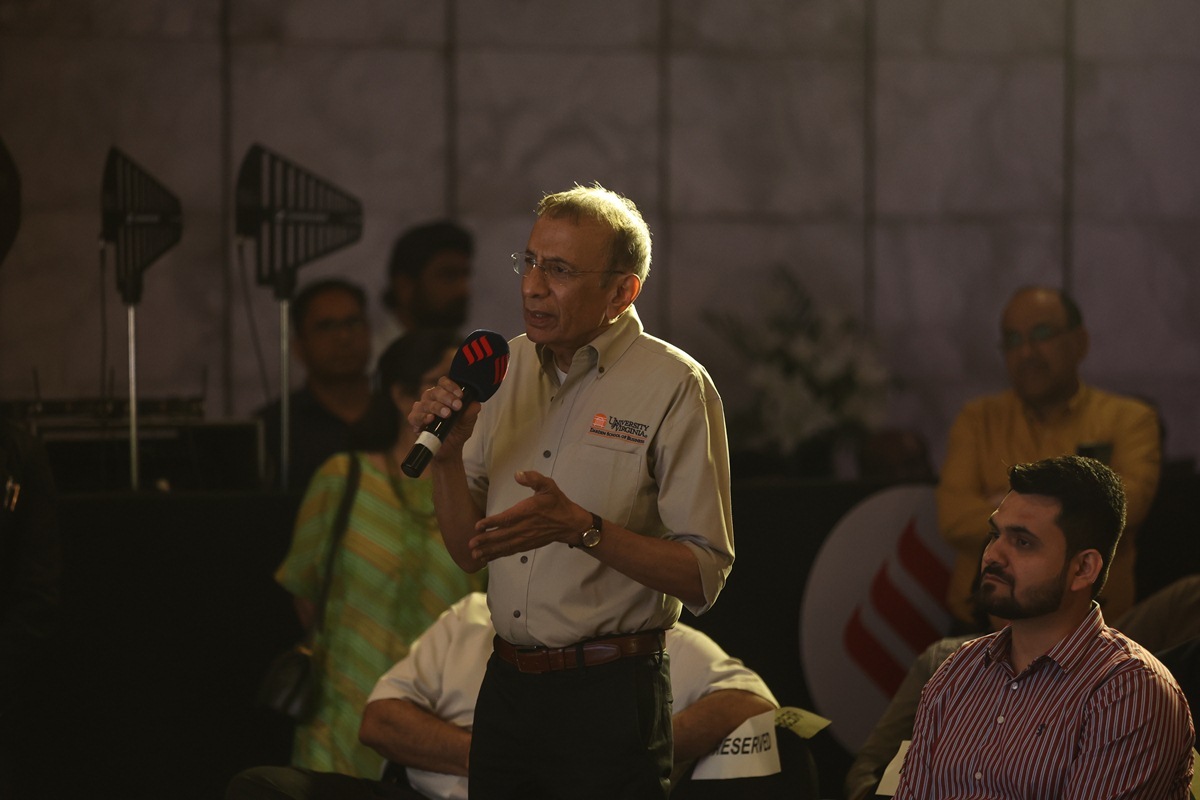 VN Dalmia at Express Adda (Express Photo)
VN Dalmia at Express Adda (Express Photo)
VN DALMIA
Director and Former Chairman, Dalmia Continental
My recent travel experience has been on Shatabdis. Why can’t we make our train toilets world class?
You must have seen what was the situation 10 years ago. Toilets in every train of the country have been converted to bio toilets in the last nine years. This is probably the greenest way of managing solid waste, compared to many other ways where people use a vacuum suction unit and then have a separate disposal. Five-six months back, we launched totally new designs of toilets. See the toilets of Vande Bharat.
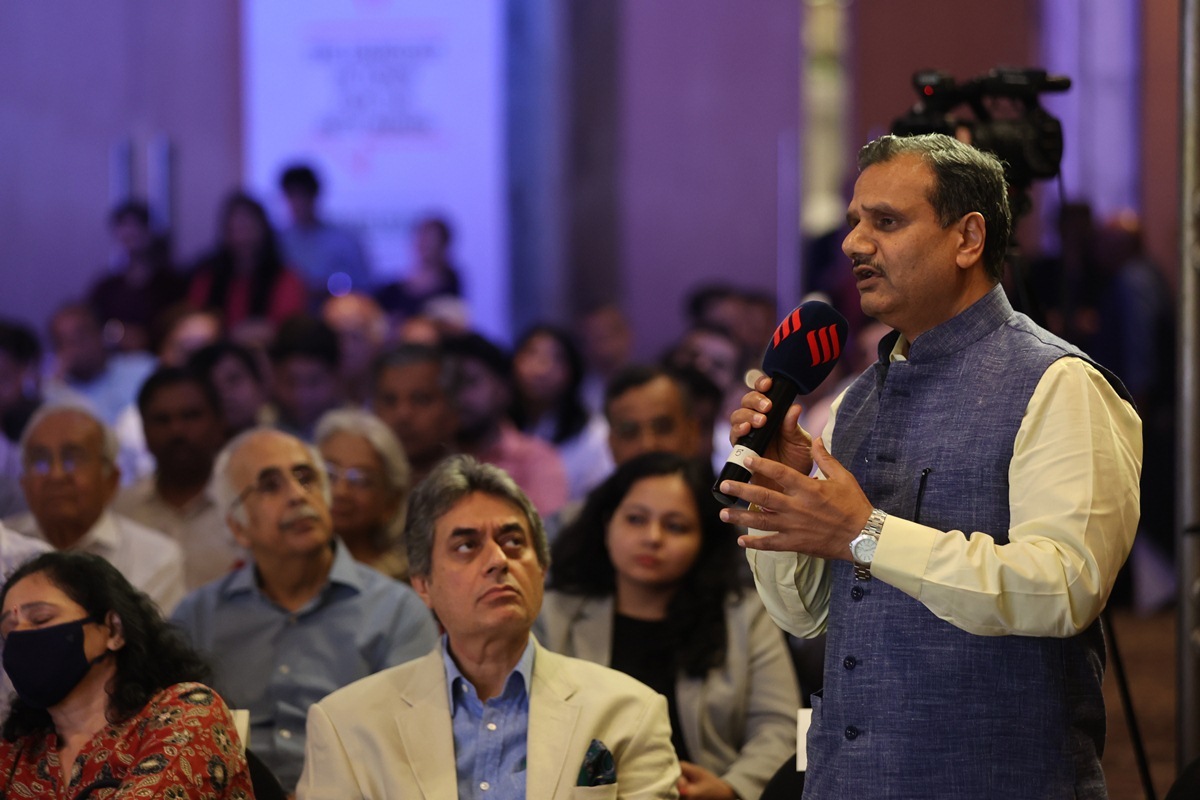 Mohit Jain at Express Adda (Express Photo)
Mohit Jain at Express Adda (Express Photo)
MOHIT JAIN
Board Member, Executive Director, Bennett, Coleman and Co. Ltd
You are talking about large budgets, Rs 2,40,000 crore for railways, does it increase the budget deficit?
The economic benefits of the railway project are significantly higher compared to the financial cost. If your economy grows by a particular nominal rate, then the taxes also come in. We have modelled, if you are investing Rs 100 in railways, the economic impact is Rs 360. The taxes which come back from this is about Rs 32-33. The MSME benefit is about Rs 230-240. So this investment is worth taking and we should not look at it purely from the profit and loss perspective. We should look at it from a comprehensive economic perspective.
 Meena Vaidyanathan at Express Adda (Express Photo)
Meena Vaidyanathan at Express Adda (Express Photo)
MEENA VAIDYANATHAN
Social entrepreneur
With our politically fractured and polarised structure, will a hub and spoke model be possible?
If you look at the political landscape of our country today and go to a village — where the per capita income is half the national average — the sincerity of our PM’s political journey, the sincerity of purpose with which he is driving governance today, is visible when you talk to the people on the ground. They say, ‘Woh aadmi theek kar raha hai’… If we work with that sincerity of purpose, the fractured politics can be take care of.
 Sanjana Chaudhury at Express Adda (Express Photo)
Sanjana Chaudhury at Express Adda (Express Photo)
SANJANA CHOUDHARY
Student of journalism, University of Delhi
In Bhopal, a railway station called Habibganj has been renamed Rani Kamalapati. You were talking about preservation of heritage, name change doesn’t comply with that. This is also India’s first privatised station. What is the future of such stations?
The future is visible to you. You can see many pictures on social media. There is no person like Habibullah. The heritage of Bhopal is the Gond Rani Kamalapati of the tribal kingdom, and that is what has been restored.
 Renu Sharma at Express Adda (Express Photo)
Renu Sharma at Express Adda (Express Photo)
RENU SHARMA
Social activist
After COVID, the 50 per cent discount you used to give 60-plus people has been withdrawn, whereas the MPs and their families still get discounts.
Let me put all facts in place. We are subsidising passenger travel by Rs 59,000 crore. The government of India is putting that much money to make sure that every passenger gets a 55 per cent concession. There are trains where subsidies go up to 80-85 per cent.
ASHISH GARG
Professor, IIT Kanpur
What is your view on the role of R&D? Also, creating technology translation centres such as Holst or IMEC (Interuniversity Microelectronics Centre) in a private-public partnership mode.
The increasing investment in R&D has enabled us to develop all these technologies, whether it is Vande Bharat, 4G-5G, defence equipment and our own solar-PV manufacturing capability. That journey is going to continue.



